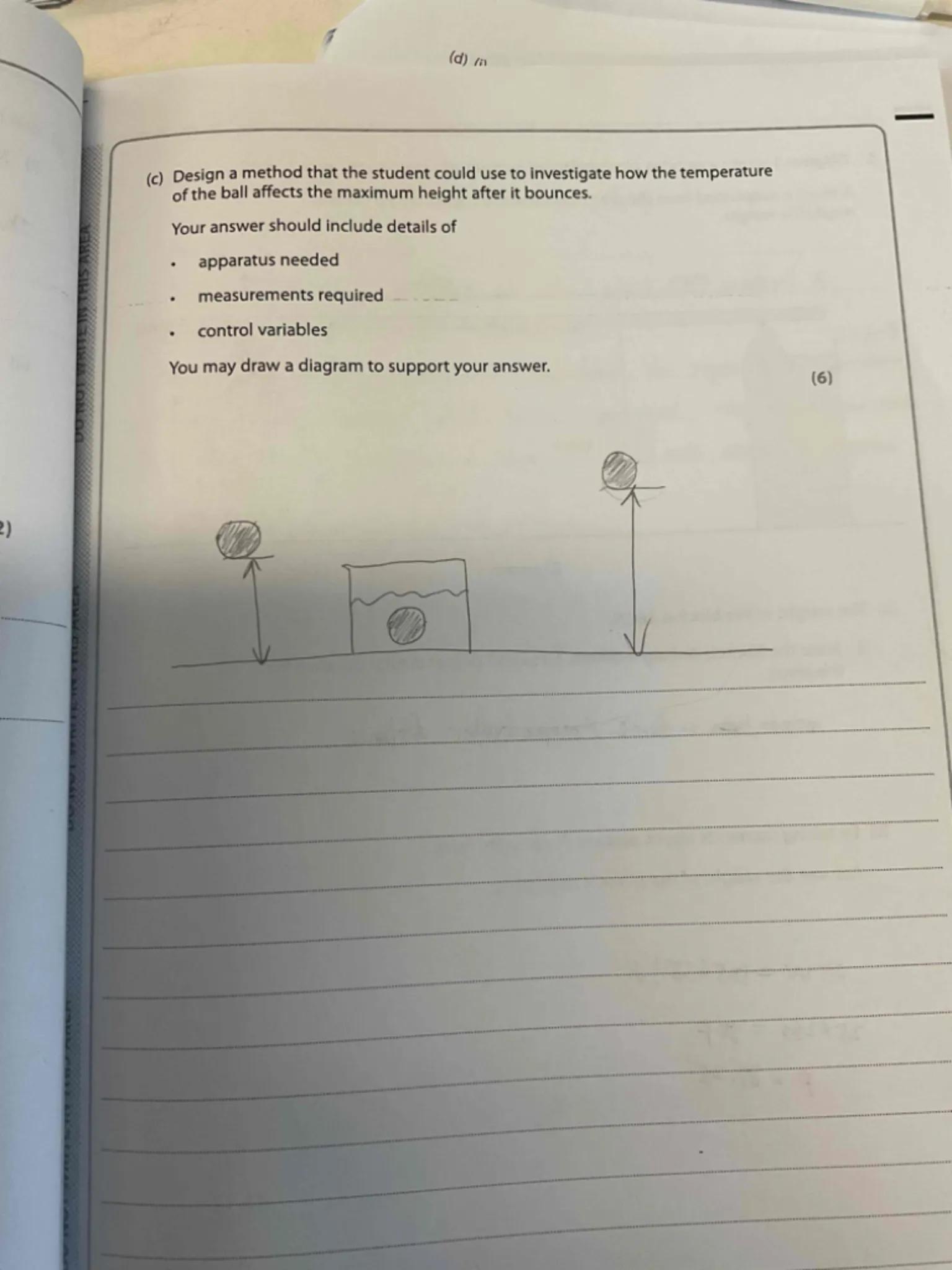
Sia
(d)
(c) Design a method that the student could use to investigate how the temperature of the ball affects the maximum height after it bounces.
Your answer should include details of
- apparatus needed
- measurements required
- control variables
You may draw a diagram to support your answer.
(6)

Answer from Sia
Posted over 1 year ago
Solution
a
Identify the independent variable as the temperature of the squash ball
b
Identify the dependent variable as the maximum height the ball bounces
c
Design the method for the investigation:
- Apparatus needed: squash balls, thermometer, hot water bath, ice bath, ruler or measuring tape, stopwatch, and a flat surface.
- Measurements required: temperature of the squash ball (using a thermometer), maximum height of the bounce (using a ruler or measuring tape).
- Control variables: type of squash ball, drop height, surface type, and ambient conditions (e.g., air pressure, humidity).
Method:
1. Heat or cool the squash ball to the desired temperature using a hot water bath or ice bath.
2. Measure and record the temperature of the ball using a thermometer.
3. Drop the ball from a fixed height onto a flat surface.
4. Measure the maximum height the ball bounces using a ruler or measuring tape.
5. Repeat the experiment for different temperatures, ensuring all other variables are kept constant
Answer
The independent variable is the temperature of the squash ball, and the dependent variable is the maximum height it bounces. The method involves heating or cooling the ball, measuring its temperature, dropping it from a fixed height, and measuring the bounce height. Control variables include the type of ball, drop height, surface type, and ambient conditions.
Key Concept
Newton's Laws of Motion:
- Newton's First Law (Law of Inertia): An object at rest stays at rest, and an object in motion stays in motion with the same velocity unless acted upon by an external force.
- Newton's Second Law: The acceleration of an object is directly proportional to the net force acting on it and inversely proportional to its mass.
- Newton's Third Law: For every action, there is an equal and opposite reaction.
Explanation
The bounce height of the squash ball is influenced by its temperature due to changes in the ball's elasticity and internal pressure. By controlling other variables and systematically varying the temperature, the relationship between temperature and bounce height can be investigated.
Not the question you are looking for? Ask here!
Enter question by text
Enter question by image
Unlock Smarter Learning with AskSia Super!
Join Super, our all-in-one AI solution that can greatly improve your learning efficiency.
30% higher accuracy than GPT-4o
Entire learning journey support
The most student-friendly features
Study Other Question
